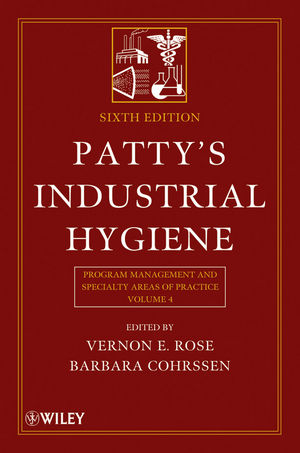Now imagine the complexity of a worksite where there are dozens or even hundreds of relationships and interactions coupled with countless pieces of equipment and environmental conditions.
How do you know you are safe?
How do you know if your safety program is healthy (i.e. working well)?
There seemingly would be many indicators, right? Not always. In many instances, safety performance is narrowed down to a basic indicator — a “check engine” equivalent — known as the injury rate.
The problem with metrics is that they are only “proxies” (i.e. substitutions) of the overall health of your safety processes, and yet they take on a life of their own. Instead of focusing on managing the safety system based on performance, the focus centers on the metric instead. Injury rate tells us where we do not want to be, but does not necessarily give us direction on how to improve. There are better indicators available than just the injury rate.
Lagging indicators: Using the rearview mirror
Everyone focuses on injury rates because they are easy to track and many organizations monitor them. However, there are some serious drawbacks to relying solely on the incident rate as the indicator of what is safe.
- What’s done is done
No matter the lessons learned from an injury, you cannot take it back. The damage can never be undone.
- It is a costly learning experience
Imagine if we used a similar indicator for our own health. We would only look for ways we could “fix” our health AFTER we had a bad experience. That is, if we would live through the ordeal.
- It places people and organizations in avoidance mode, not achievement mode
For instance, if someone ate junk food all day, didn’t exercise regularly, and never got enough sleep, and didn’t have any serious health problems (e.g. heart attack, diabetes and obesity), then they should assume they are healthy, right? Organizations use injury rates the same way. Companies could have a low (or zero) injury rate, indicating one of several things — they are doing a good job managing their safety program; have competent employees; they are just plain lucky; or a combination of all three.
- Focus on metrics, instead of the process, leads to poor results
Companies are often incentivized to produce a specific injury rate and usually a perfect one. This drive to zero often causes the unintended and undesirable effect of non-reporting of injuries. For example, a new construction study1 finds that there are multiple layers of disincentives to reporting work-related injuries in the construction industry. The title of this study says it all — “Safety, Incentives, and the Reporting of Work-Related Injuries Among Union Carpenters: ‘You’re pretty much screwed if you get hurt at work’.”
Leading indicators: Predicting and preventing
Organizations need to look further “upstream” in their safety processes for metrics. This may be considered a “pre-injury investigation” (Conklin, 2012). For example, consider what activities, conditions or behaviors could lead to injuries. If identified and addressed proactively, injuries could be prevented. Leading indicators include job observations of conditions and behaviors, risk assessments, safety activities (e.g. closure of open safety issues), and audits. Lagging indicators (e.g. lost time and total injury rates) are simply quantitative, whereas leading indicators can also be qualitative.
Referring back to the health example in the first section, people want to be healthy and would rather not wait for a health-related incident to begin making improvements. People have many choices when it comes to health-related “leading indicators.” They can get a physical, have medical tests done (e.g. stress tests, EKG), assess lab results (e.g. cholesterol), and analyze their medical histories to determine genetic predispositions. In addition, people can readily find information to determine what is required for a healthy lifestyle such as proper diet, exercise and ideal body weight.
Keeping this personal medical example in mind, what are some leading indicators in a safety program? Safety professionals can perform job observations and find unsafe conditions and/or behaviors. Although no injury has occurred, unsafe findings may indicate a breakdown in the safety process.
Despite the advantages of collecting these leading indicators, there are still some drawbacks:
- Collecting data does not equal prevention
If someone weighs themselves daily, will this necessarily make them lose weight? Of course not. One can measure results and compare it to their efforts, most certainly. Likewise, safety professionals can act on findings before an incident occurs, but monitoring alone is insufficient and only the beginning.
- Leading indicators require acting on weak signals
The problem with working safely is that being unsafe does not always lead to an injury. People often eat junk food and might never experience poor health. The same is true in every organization. Workers have made unsafe behaviors a habit reinforced by not getting hurt, or they might even be positively encouraged by supervision when productivity is high. At what point is action taken to correct risky behaviors and unsafe conditions? The longer the injury rate remains low, the harder it will be to convince others to take action proactively.
- Fixing it doesn’t always solve it
It is common to find reoccurring risky behaviors and/or conditions that are immediately addressed, but are discovered again the next day or week. Finding it and fixing it AGAIN, would not suddenly change the conditions that were reinforcing those risky behaviors. Some consequences (either positive or negative) must be applied if different results are to be expected. This would be similar to a police officer only giving out warnings for people speeding. If this continues, the driver will learn that there are no negative consequences for speeding.
- Focusing on metrics instead of the processes leads to poor results
Many safety programs get introduced to identify behaviors and conditions that lead to injuries so that leaders can proactively address them. It is not uncommon for the excited VP to emphatically state, “I expect everyone to be 100% safe!” Although his heart might be in the right place, his statement might send a message that he does not want to see any unsafe findings. This focus on a “safe” metric may inadvertently motivate people to only record safe behaviors and ignore the risky ones. How can we manage risk if we don’t know where it resides?
Precursors: Getting ahead of the incident
The missing piece is still further upstream and found in precursors. Precursors are barriers or defenses that are put into place to stop injuries from occurring. They can take many forms such as organizational (e.g. culture, communication), technical (e.g. engineering controls) or personal (e.g. competence, training).
Proactive action is necessary. No amount of measuring will improve things, only action will. As with our health, we can measure failures (lagging) and our efforts (leading), but what we MUST do is act! People must assess their actions: Am I doing the right things? Do I have the tools necessary to do what needs to be done? Are my efforts resulting in ideal outcomes?
Continuous improvement
There is no single indicator that can unequivocally answer the question, ‘What is safe?’ What is necessary is to not only learn from your failures, but more important, from your successes. Safety professionals can strive to uncover issues before they lead to injuries, turn all of that data into actionable information, take proactive action to address the gaps in their safety systems, and ultimately prevent injuries. If you and everyone in your organization are doing this and you aren’t relying on a simple answer to a complex problem, then you are on your path to a healthy safety program.
References
[1] Lipscomb H.J., Nolan J., Patterson D., Sticca V., Myers D.J. (2012). Safety, Incentives, and the Reporting of Work-Related Injuries Among Union Carpenters: “You’re pretty much screwed if you get hurt at work”. [ONLINE] Available at: http://www.ncbi.nlm.nih.gov/pubmed/23109103. [Last Accessed May 15, 2013].
Conklin, T., (2012). Pre-Accident Investigations: An Introduction to Organizational Safety. 1st ed. Ashgate Pub Co.




